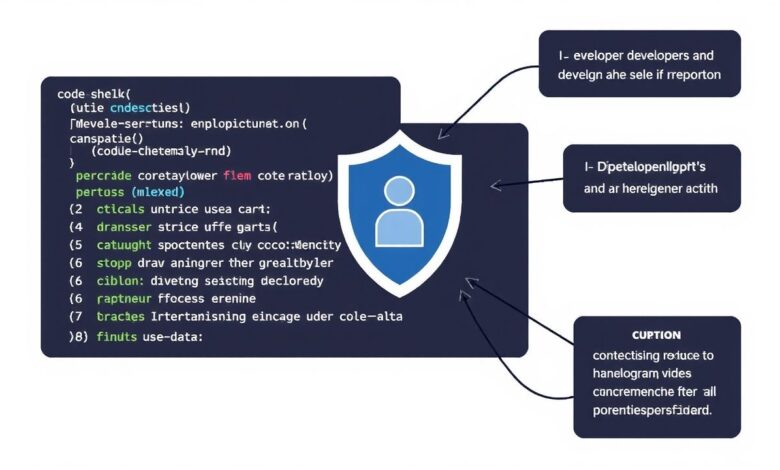Decoding Phishing Attacks: A Developer’s Guide to Prevention

Phishing remains one of the most pervasive and damaging cyber threats faced by individuals and organizations today. While often seen as a user-awareness issue, developers play a crucial, often underestimated, role in bolstering defenses. Understanding the anatomy of these attacks is the first step towards effective phishing attack prevention, and equipping developers with the right knowledge and tools can significantly harden applications and systems against these deceptive campaigns.
This post dives into how phishing attacks work and outlines actionable strategies developers can implement to help safeguard users and data.
Understanding the Anatomy of a Phishing Attack
Phishing attacks aren’t typically brute-force technical exploits; they are sophisticated campaigns preying on human psychology. They follow a general pattern:
- Baiting: Attackers craft convincing messages – often emails, SMS (smishing), or social media messages – impersonating trusted entities like banks, popular services, or even internal company departments.
- Hook: These messages employ tactics like urgency (“Your account access expires in 1 hour!”), fear (“Unauthorized login attempt detected!”), or curiosity (“You have a pending refund!”) to prompt immediate action from the victim.
- Capture: The victim clicks a malicious link leading to a fake login page designed to steal credentials, or they might open an attachment that deploys malware (like ransomware or spyware).
- Exploitation: Once the attacker has the credentials or system access, they can execute their objectives – stealing funds, harvesting sensitive data, committing identity theft, or using the compromised account for further attacks.
[Hint: Insert image depicting the stages of a phishing attack here]
Common Phishing Techniques Developers Should Recognize
While the core principle remains the same, phishing manifests in various forms:
- Email Phishing: The most common type, using spoofed email addresses and replicated branding.
- Spear Phishing: Highly targeted attacks personalized for specific individuals or roles within an organization, often using information gathered from social media or previous breaches.
- Whaling: A form of spear phishing specifically targeting high-profile individuals like C-suite executives.
- Smishing & Vishing: Using SMS text messages or voice calls (respectively) to deliver the phishing lure.
- Clone Phishing: Taking a legitimate, previously delivered email, copying it, and replacing links or attachments with malicious versions.
The Developer’s Role in Phishing Attack Prevention
While user training and email filters are vital front-line defenses, developers build the very platforms attackers try to mimic or exploit. By integrating security into the development lifecycle, developers can significantly reduce the success rate and impact of phishing attacks.
1. Implement Secure Authentication Mechanisms
Stolen credentials are a primary goal of phishing. Developers can counter this by:
- Enforcing Multi-Factor Authentication (MFA): Make MFA mandatory or strongly encouraged. Even if credentials are phished, MFA provides a critical second layer of defense.
- Promoting Phishing-Resistant MFA: Advocate for and implement stronger MFA methods like FIDO2/WebAuthn, which bind authentication to specific domains, making credentials stolen via fake sites useless.
- Secure Password Resets: Ensure password reset processes are robust and don’t rely solely on easily phished information.
2. Secure Coding Practices Against Credential Stuffing
Phished credentials are often used in credential stuffing attacks against other sites. Developers should:
- Input Validation: Rigorously validate all user inputs to prevent injection attacks (XSS, SQLi) that could be used to steal session cookies or data.
- Rate Limiting: Implement rate limiting on login endpoints to slow down automated credential stuffing attempts.
- CAPTCHA: Use CAPTCHA or similar mechanisms on login forms after multiple failed attempts.
[Hint: Insert image/diagram illustrating secure login flow here]
3. Enhance Website and Email Trustworthiness
Developers can help users distinguish legitimate communications and sites:
- Implement Email Authentication Standards: Work with infrastructure teams to ensure SPF, DKIM, and DMARC are correctly configured for outgoing emails. This helps prevent attackers from spoofing your domain in their phishing emails. Learn more about these standards in our related article: Understanding Email Security Protocols.
- Use Extended Validation (EV) SSL Certificates (where appropriate): While not foolproof, EV certificates can provide an additional visual cue of legitimacy in some browsers.
- Consistent Branding: Ensure web applications and emails maintain consistent, high-quality branding that is harder for attackers to replicate perfectly.
4. Secure APIs
APIs can be targets or conduits for attacks initiated via phishing. Secure APIs by:
- Proper Authentication/Authorization: Ensure robust checks on every API call.
- Input Validation: Validate data received via APIs just as rigorously as web form input.
5. Stay Informed on Emerging Threats
The phishing landscape constantly evolves. Developers should be aware of trends like:
- AI-Powered Phishing: Generative AI makes creating highly convincing, personalized phishing emails easier for attackers.
- Deepfakes: Audio or video deepfakes could be used in sophisticated vishing or spear-phishing campaigns.
- Cloud Service Exploitation: Attackers leverage trusted cloud platforms (like file sharing or collaboration tools) to host malicious content, bypassing some traditional filters.
Consult reputable sources like the OWASP Top Ten for ongoing insights into web application vulnerabilities often exploited alongside phishing.
Conclusion: A Collaborative Defense
Phishing attack prevention is not solely the responsibility of end-users or security teams. Developers are integral to building resilient systems that inherently resist these attacks. By implementing secure authentication, adhering to secure coding practices, helping establish email trust, and staying vigilant about new threats, developers can build applications that are significantly harder targets. This technical foundation, combined with user education and robust security policies, creates the layered defense necessary to combat the ever-present threat of phishing.




